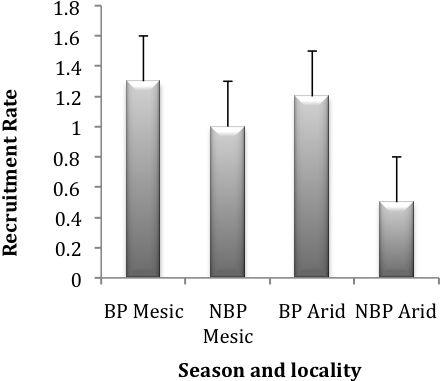| << Chapter < Page | Chapter >> Page > |

O’Riain et al. (2000) have discovered that queens in naked mole-rats have a morph of their own, like that found in eusocial insects. Queens, it seems, have a longer vertebrae than female workers that is dependent on successful reproduction, not just attempted reproduction. This is probably due to hormones released during the later stages of pregnancy or during lactation. The extension provides some benefits, like allowing for a larger reproductive tract and more pups in a litter at a time. This phenomenon helps explain why pup litter size increases from one birth to the next. New queens have a smaller vertebra than do older queens (O’Riain et al. 2000).
The evolution of eusociality in such varied organisms as insects and mole-rats shows a surprising convergence. The fact that queens have a morph of their own, like that found in some eusocial insects, shows an even greater degree of convergence. This natural convergence of traits leads to the belief that similar selective conditions must be present for the evolution of the traits in such varied organisms. More importantly, it seems to point out that the selective factors are more likely to be extrinsic than intrinsic because the organisms are so different genetically (O’Riain et al. 2000).
Despite the risks, though, certain members of both the naked mole-rat and the Damaraland mole-rat attempt to leave each year, generally directly after the rainy season (O’Riain et al. 1996, Braude 2000, Hazell et al. 2000, Scantlebury et al. 2006). These mole-rats form their own caste within the colony and have morphological differences that separate them from the other workers and from the queen ( [link] ). O’Riain et al. (1996) and Braude (2000) found both in the lab and in the wild that naked mole-rats have a separate dispersive morph. This caste of mole-rats has significantly more body fat than normal workers. They act as workers, albeit lazy ones, until after the rains, when they attempt to disperse (O’Riain et al. 1996, Braude 2000). According to Braude’s field findings, most of the dispersers attempt to found new colonies, with only a few attempting to join established ones. O’Riain et al. (1996) found that within the established colonies, the newcomers are treated aggressively by the workers, but not the breeders, showing the conflict of interest between workers and breeders. The workers see the newcomer as a threat to their chance at becoming a breeder while the reproductive sees the newcomer as a possible mate. Often, the newcomer was forced out by the workers (O’Riain 1996).

Notification Switch
Would you like to follow the 'Mockingbird tales: readings in animal behavior' conversation and receive update notifications?